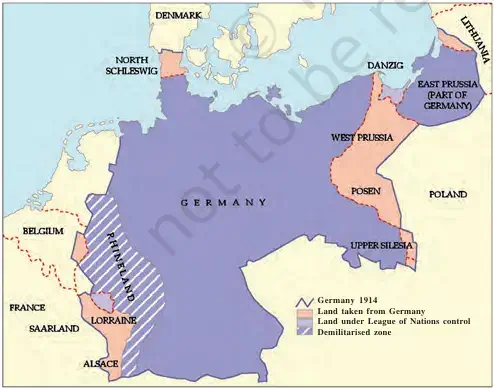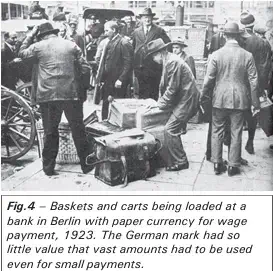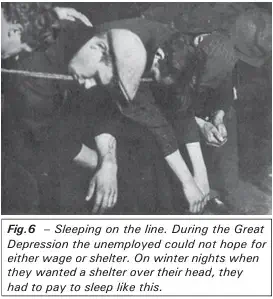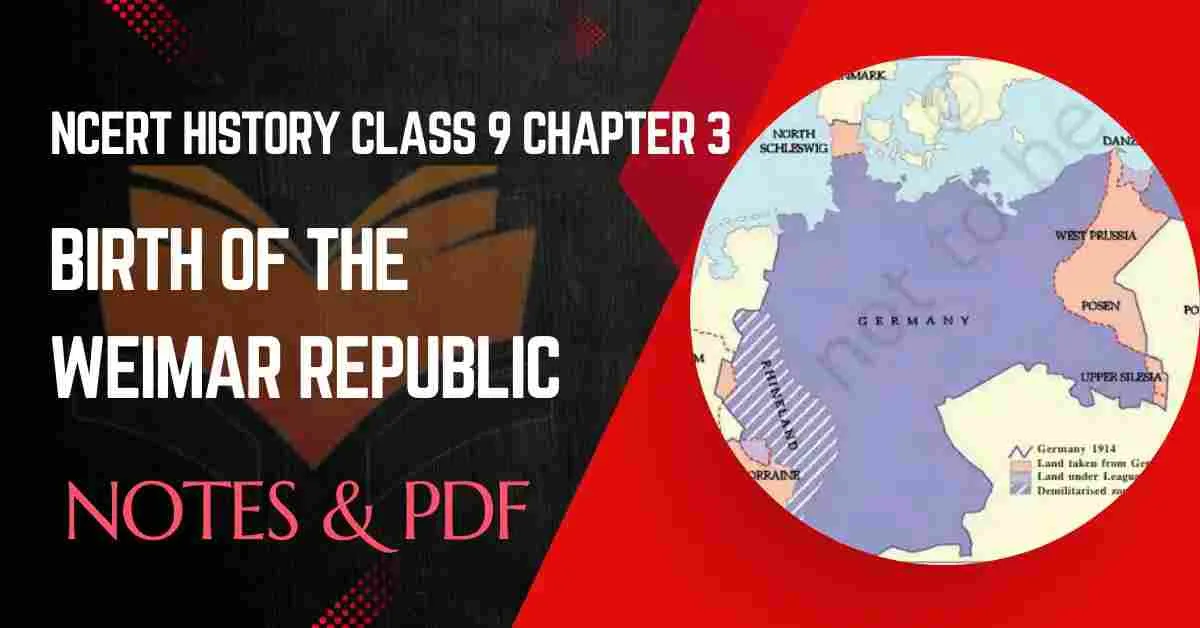Birth of the Weimar Republic – Concept & Notes PDF
Topic & sub-topics covered: Birth of the Weimar Republic and MCQs Questions: Nazism and the Rise of Hitler (All single detail notes are exam-oriented).
We have discussed in-depth and exam-oriented pointers that can be asked in the board exam of class 9th about the “Birth of the Weimar Republic” from the NCERT History notes for class 9th chapter 3rd “Nazism and the Rise of Hitler“.
Download the NCERT History for Class 9th Chapter 3 Nazism and the Rise of Hitler Notes PDF
NCERT History for Class 9th Chapter 3_ Nazism and the Rise of Hitler Notes & MCQ’s Question-Answer
Have you ever wondered how a failed artist like Hitler ended up becoming the dictator of all Germany? Class 9 NCERT History Chapter 3 “Nazism and the Rise of Hitler” tells exactly that story. When I first read it, I was honestly shocked by how bad things got in Germany after the Treaty of Versailles – crushing debt, unemployment, and hopelessness everywhere. Imagine the 1930s: people struggling to survive, feeling betrayed and angry… and then comes one man who turns all that frustration to his advantage. These notes capture the key events, from Nazi propaganda to the persecution of Jews, in a way that’s quick to revise but still gives you the “feel” of that time.
Download the NCERT History Class 9 Chapter 3 Nazism and the Rise of Hitler Notes PDF to make your exam preparation clear and effective. These notes explain the historical background of Germany after World War I, the rise of Adolf Hitler, and the impact of Nazi ideology on society and politics. Download now and strengthen your understanding of one of the most significant and impactful chapters in modern world history for Class 9.
Birth of the Weimar Republic
1. Germany in the First World War:
- Germany was a powerful empire in the early 20th century.
- It fought the First World War (1914 – 1918) alongside the Austrian Empire.
- Germany fought against the Allies – England, France, and Russia.
- All nations joined the war enthusiastically, expecting a quick victory.
- The war unexpectedly dragged on, draining Europe’s resources.
- Germany initially made gains by occupying France and Belgium.
- The Allies were strengthened by the entry of the USA in 1917.
- In November 1918, the Allies defeated Germany and the Central Powers.
2. Formation of the Weimar Republic:
- The defeat of Imperial Germany led to the abdication of the emperor.
- Parliamentary parties got a chance to restructure the German polity.
- A National Assembly met at Weimar and established a democratic constitution.
- The constitution had a federal structure.
- Deputies were elected to the Reichstag (German Parliament).
- Elections were based on equal and universal adult suffrage, including women.
3. Treaty of Versailles & Its Impact:

- The Weimar Republic was unpopular among Germans.
- The main reason was the harsh terms of the Treaty of Versailles.
- Germany lost:
a. All its overseas colonies.
b. 10% of its population.
c. 13% of its territories.
d. 75% of its iron resources.
e. 26% of its coal resources. - The lost territories went to France, Poland, Denmark, and Lithuania.
- The Allies demilitarised Germany to weaken its power.
- War Guilt Clause held Germany responsible for the war.
- Germany had to pay £6 billion in compensation.
- The Allied armies occupied the resource-rich Rhineland in the 1920s.
- Many Germans blamed the Weimar Republic for:
a. Defeat in the war.
b. National humiliation at Versailles.
The Effects of the War
1. Post-War Economic Impact:
- After World War I, Europe changed from a continent of creditors to one of debtors.
- The Weimar Republic had to bear the burden of war guilt and national humiliation.
- Germany was financially crippled by the obligation to pay heavy compensation.
2. Political Consequences for Weimar Republic:
- The republic was blamed for the defeat and harsh peace terms.
- Supporters – Socialists, Catholics, and Democrats – became targets of conservative nationalists.
- They were mockingly called ‘November criminals’.
- This hostility shaped political developments in the early 1930s.
3. Social & Cultural Impact of the First World War:
- War left a deep psychological imprint on society and politics.
- Soldiers were placed above civilians in status.
- Leaders and publicists promoted the image of aggressive, strong, masculine men.
4. Trench Warfare – Reality vs. Propaganda:
- Media glorified trench life, portraying it as heroic.
- In reality, soldiers faced miserable conditions – rats feeding on corpses, poisonous gas, and constant enemy shelling.
- Heavy casualties led to rapid decline in soldier numbers.
5. Rise of Authoritarian Politics:
- Aggressive war propaganda and national honour dominated the public sphere.
- Support grew for conservative dictatorships emerging in Europe.
- Democracy was young and fragile, unable to withstand interwar instability.
Political Radicalism and Economic Crises

1. Birth of the Weimar Republic & Spartacist Uprising:
- The Weimar Republic was formed during the Spartacist League’s revolutionary uprising (inspired by the Bolshevik Revolution in Russia).
- Soviets of workers and sailors were formed in many German cities.
- Berlin’s political climate was charged with demands for Soviet-style governance.
2. Opposition to the Spartacists:
- Socialists, Democrats, and Catholics opposed Soviet-style rule.
- They met in Weimar to frame a democratic republic.
- The Weimar government crushed the Spartacist uprising with help from Free Corps (war veterans’ organisation).
3. Formation of the Communist Party of Germany:
- After defeat, the Spartacists formed the Communist Party of Germany.
- Communists and Socialists became irreconcilable enemies.
- Their division prevented a united front against Hitler later.
4. Political Radicalisation:
- Both revolutionaries and militant nationalists sought radical solutions.
5. Economic Crisis of 1923:

- Cause: Germany fought WWI on loans and had to pay reparations in gold, depleting reserves.
- In 1923, Germany refused payment – France occupied Ruhr, Germany’s leading industrial region, to take coal.
- Germany responded with passive resistance and excessive printing of paper currency.
6. Hyperinflation in Germany:
- Oversupply of printed money – German mark’s value collapsed.
- US dollar exchange rate:
a. April 1923 – 1 USD = 24,000 marks
b. July – 353,000 marks
c. August – 4,621,000 marks
d. December – 98,860,000 marks, later running into trillions. - Prices soared; Germans needed cartloads of currency for basic items like bread.
- This situation became known as Hyperinflation (extreme price rise).
- Images of suffering Germans evoked worldwide sympathy.
7. Dawes Plan & Recovery:
- US intervention introduced the Dawes Plan.
- Reworked reparation terms – eased Germany’s financial burden.
The Years of Depression

1. Economic Stability before Depression (1924 – 1928):
- Period between 1924 and 1928 saw temporary stability in Germany.
- Stability was dependent on short-term loans, mainly from the USA.
2. Wall Street Crash of 1929:
- 24 October 1929 – Wall Street Exchange crashed.
- 13 million shares sold in a single day.
- Triggered the Great Economic Depression.
- Between 1929 and 1932, USA’s national income dropped by 50%.
- Consequences in the USA: factories closed, exports declined, farmers hit badly, speculators withdrew investments.
- The recession’s impact was felt worldwide.
3. Impact on Germany’s Economy:
- Worst-hit country by the crisis.
- By 1932, industrial production was down to 40% of 1929 levels.
- Unemployment reached 6 million.
- People displayed placards saying “Willing to do any work”.
- Youths either idled at street corners or turned to criminal activities.
4. Social Impact of the Depression:
- Middle class (salaried employees, pensioners) lost savings due to currency devaluation.
- Small businessmen, self-employed, and retailers faced business ruin.
- Fear of proletarianisation – being reduced to the working class or unemployed.
- Organised workers retained jobs but with reduced bargaining power.
- Big businesses also suffered.
- Peasants faced falling agricultural prices.
- Women suffered deeply as they struggled to feed their children.
5. Political Weakness of the Weimar Republic:
- Weimar Constitution had inherent defects:
a. Proportional representation – made majority formation almost impossible; led to unstable coalition governments.
b. Article 48 – President could impose emergency, suspend civil rights, and rule by decree. - Frequent cabinet changes – 20 cabinets in 14 years, averaging 239 days each.
- Overuse of Article 48 weakened democracy.
- People lost faith in the democratic parliamentary system.
New words:
- Deplete – Reduce, empty out Reparation – Make up for a wrong done
- Wall Street Exchange – The name of the world’s biggest stock exchange located in the USA.
- Proletarianisation – To become impoverished to the level of working classes.
Next & Previous Topics of NCERT/CBSE History Class 9 Chapter 3: Nazism and the Rise of Hitler
| Topics No. | Topics Name |
|---|---|
| 1 | Birth of the Weimar Republic |
| 2 | Hitler’s Rise to Power |
| 3 | The Nazi Worldview |
| 4 | Youth in Nazi Germany |
| 5 | Ordinary People and the Crimes Against Humanity |
MCQs on NCERT History Class 9 Chapter 3 Topic – Birth of the Weimar Republic
Here are the top exam-oriented MCQ-type questions on “Birth of the Weimar Republic” that you should prepare for your CBSE or state board exams:
Question 1. When did the First World War take place?
a) 1910–1914
b) 1914–1918
c) 1916–1920
d) 1912–1916
Answer: b) 1914–1918
Question 2. Which countries fought alongside Germany during the First World War?
a) England and France
b) Austria and Italy
c) Austrian Empire
d) Russia and Austria
Answer: c) Austrian Empire
Question 3. Which countries were part of the Allies in World War I?
a) England, France, Russia
b) Germany, Austria, Italy
c) USA, England, Germany
d) France, Italy, Austria
Answer: a) England, France, Russia
Question 4. Which country’s entry in 1917 strengthened the Allies?
a) Italy
b) USA
c) Japan
d) Spain
Answer: b) USA
Question 5. In which month and year were Germany and the Central Powers defeated?
a) November 1918
b) October 1917
c) June 1919
d) May 1920
Answer: a) November 1918
Question 6. What happened to the German Emperor after Germany’s defeat in WWI?
a) He was assassinated
b) He abdicated
c) He was exiled to the USA
d) He became a dictator
Answer: b) He abdicated
Question 7. Where did the National Assembly meet to draft Germany’s new constitution?
a) Berlin
b) Weimar
c) Munich
d) Frankfurt
Answer: b) Weimar
Question 8. The German democratic constitution provided a federal structure and elections to which parliament?
a) Bundestag
b) Reichstag
c) Diet
d) Reichrat
Answer: b) Reichstag
Question 9. In the Weimar Republic, who got the right to vote?
a) Only men
b) Only property owners
c) All adults including women
d) Only soldiers
Answer: c) All adults including women
Question 10. Why was the Weimar Republic unpopular among its own people?
a) It banned all political parties
b) It was linked to the humiliating Versailles Treaty
c) It supported the monarchy
d) It abolished elections
Answer: b) It was linked to the humiliating Versailles Treaty
Question 11. Under the Treaty of Versailles, what fraction of its population did Germany lose?
a) One-fifth
b) One-fourth
c) One-tenth
d) One-third
Answer: c) One-tenth
Question 12. How much of its iron reserves did Germany lose under the Treaty of Versailles?
a) 50%
b) 75%
c) 25%
d) 13%
Answer: b) 75%
Question 13. How much coal did Germany lose under the Treaty of Versailles?
a) 50%
b) 13%
c) 26%
d) 75%
Answer: c) 26%
Question 14. Which clause in the Treaty of Versailles held Germany responsible for WWI?
a) War Indemnity Clause
b) War Guilt Clause
c) Peace Responsibility Clause
d) National Loss Clause
Answer: b) War Guilt Clause
Question 15. How much compensation was Germany forced to pay after WWI?
a) £2 billion
b) £6 billion
c) £10 billion
d) £8 billion
Answer: b) £6 billion
Question 16. Which resource-rich area of Germany was occupied by the Allies in the 1920s?
a) Saar
b) Rhineland
c) Ruhr Valley
d) Alsace-Lorraine
Answer: b) Rhineland
Question 17. What happened to Europe’s financial status after WWI?
a) It became richer
b) It turned from a creditor to a debtor continent
c) It became self-sufficient
d) It dominated world trade
Answer: b) It turned from a creditor to a debtor continent
Question 18. Who were mockingly called ‘November criminals’ in Germany?
a) Monarchists
b) Supporters of the Weimar Republic
c) War veterans
d) Soldiers in WWI
Answer: b) Supporters of the Weimar Republic
Question 19. Which groups mainly supported the Weimar Republic?
a) Monarchists and Militarists
b) Socialists, Catholics, and Democrats
c) Communists and Fascists
d) Army and Businessmen
Answer: b) Socialists, Catholics, and Democrats
Question 20. Which dictatorship type gained popularity in post-WWI Europe?
a) Communist
b) Conservative
c) Theocratic
d) Tribal
Answer: b) Conservative
Question 21. What was the reality of trench life in WWI?
a) Comfortable and safe
b) Filled with rats and corpses
c) Luxurious living
d) Modern housing
Answer: b) Filled with rats and corpses
Question 22. Which revolutionary uprising coincided with the birth of the Weimar Republic?
a) Spartacist League Uprising
b) Bolshevik Revolution
c) French Revolution
d) Industrial Revolution
Answer: a) Spartacist League Uprising
Question 23. Which war veterans’ organisation helped crush the Spartacist uprising?
a) Black Shirts
b) Free Corps
c) Red Army
d) Brown Shirts
Answer: b) Free Corps
Question 24. Which political party was founded by the Spartacists?
a) Socialist Party of Germany
b) Communist Party of Germany
c) Nazi Party
d) Democratic Party of Germany
Answer: b) Communist Party of Germany
Question 25. Which year saw Germany’s hyperinflation crisis?
a) 1921
b) 1923
c) 1925
d) 1929
Answer: b) 1923
Question 26. Which industrial region was occupied by France in 1923?
a) Saar
b) Ruhr
c) Rhineland
d) Alsace-Lorraine
Answer: b) Ruhr
Question 27. What caused hyperinflation in Germany in 1923?
a) Overproduction
b) Reckless printing of paper currency
c) Increased exports
d) Foreign investment
Answer: b) Reckless printing of paper currency
Question 28. Which plan was introduced by the USA to ease Germany’s financial burden?
a) Marshall Plan
b) Dawes Plan
c) Young Plan
d) Truman Plan
Answer: b) Dawes Plan
Question 29. Which years saw temporary stability in Germany after WWI?
a) 1920–1923
b) 1924–1928
c) 1929–1932
d) 1918–1920
Answer: b) 1924–1928
Question 30. Which event in 1929 triggered the Great Depression?
a) Treaty of Versailles
b) Wall Street Exchange Crash
c) Occupation of Ruhr
d) Dawes Plan withdrawal
Answer: b) Wall Street Exchange Crash
Question 31. On which date were 13 million shares sold, marking the start of the Depression?
a) 4 July 1929
b) 24 October 1929
c) 1 January 1930
d) 14 November 1929
Answer: b) 24 October 1929
Question 32. By what percentage had German industrial production fallen by 1932 compared to 1929?
a) 50%
b) 60%
c) 40%
d) 70%
Answer: c) 40%
Question 33. What was the number of unemployed in Germany during the Great Depression?
a) 3 million
b) 4 million
c) 6 million
d) 8 million
Answer: c) 6 million
Question 34. What does the term “proletarianisation” mean in this context?
a) Becoming wealthy
b) Being reduced to the working class or unemployed
c) Becoming soldiers
d) Owning factories
Answer: b) Being reduced to the working class or unemployed
Question 35. Which group suffered the fear of proletarianisation the most during the Depression?
a) Big industrialists
b) Middle classes
c) Peasants
d) Army officers
Answer: b) Middle classes
Question 36. Which constitutional defect of Weimar Republic made it unstable by causing fragmented parliaments?
a) Article 48
b) Proportional representation
c) Federal structure
d) Universal suffrage
Answer: b) Proportional representation
Question 37. Which article of the Weimar Constitution allowed the President to rule by decree?
a) Article 42
b) Article 48
c) Article 50
d) Article 52
Answer: b) Article 48
Question 38. How many different cabinets did the Weimar Republic have in its short life?
a) 10
b) 15
c) 20
d) 25
Answer: c) 20

